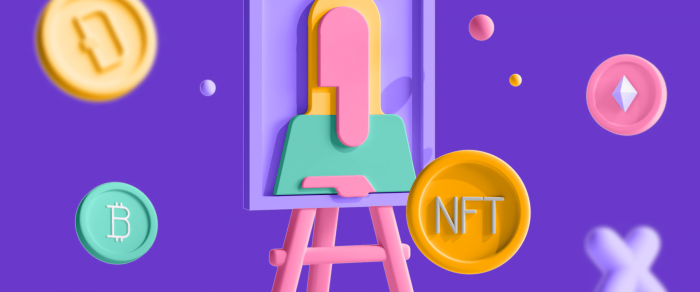What Are NFT Trading Cards? – How NFTs Take Over the World of Collectibles
Collectible cards have been a treasured hobby for enthusiasts for centuries, with rare and valuable ones fetching hundreds of dollars at auctions today. In April 2022, one of the most expensive and rare Pokemon cards was sold at $5.275 million to YouTuber Logan Paul, setting the record for the most expensive collectible card ever sold.
From sports trading cards to card games like Magic: The Gathering, these tangible items hold sentimental and monetary value for many.
With the advent of blockchain technology, a new type of collectibles has entered the market – non-fungible token (NFT) trading cards. These digital analogs offered collectors new opportunities and challenges in their pursuit of unique and valuable pieces.
Key Takeaways:
- Trading cards have become increasingly popular for decades, with collectors from all over the world eager to get their hands on rare and valuable pieces.
- Blockchain technology, specifically NFTs, has ushered in a new era for digital trading cards.
- There are many marketplaces where you can trade your cards with other collectors.
The Rise of Collectible Cards
The concept of trading cards dates back to the 19th century when cards were first introduced as advertisements for tobacco companies. These early cards featured simple designs, but they quickly captured the imagination of collectors and laid the foundation for the trading card industry.
However, it wasn’t until the mid-20th century that trading cards truly took off, with the introduction of sports and non-sport cards. These cards featured images of popular athletes and pop culture icons, making them highly sought after by fans and collectors alike.
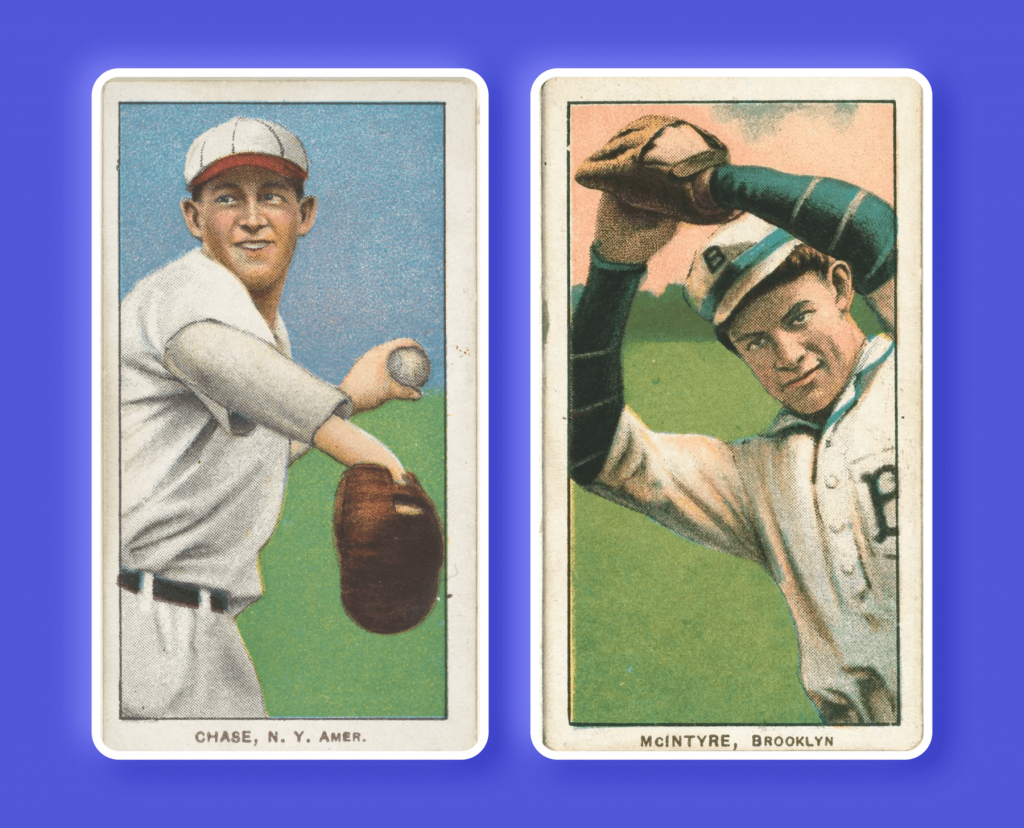
Over the years, trading cards expanded beyond sport and encompassed a wide range of entertainment franchises. From football to basketball, superheroes to anime characters, trading cards became a popular form of collecting and trading. The thrill of finding a rare or valuable card fueled the passion of collectors worldwide.
In the 1990s, gaming cards evolved into a booming trend, with franchises like Pokemon and Magic: The Gathering gaining massive popularity. These cards offered not only collectible value but also provided a unique gaming experience for players.
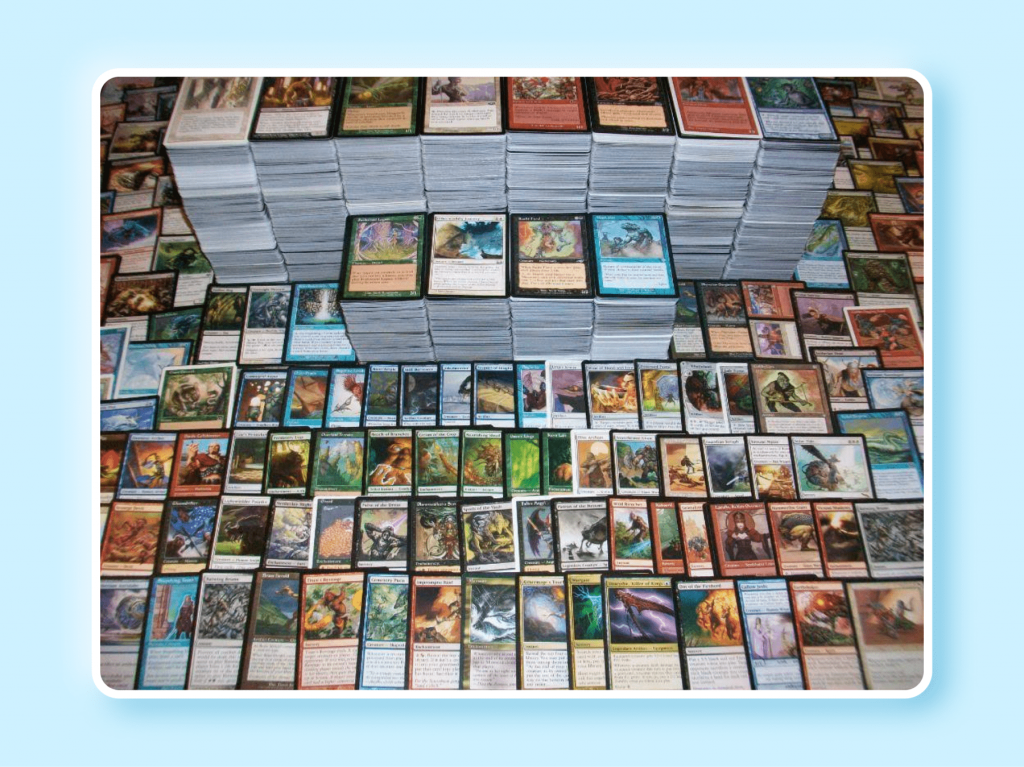
Today, with the rise of technology and online gaming, collectible card games (CCGs) have become a global phenomenon in the digital world, too. CCGs have become more than just a hobby, with professional players and international tournaments drawing in large crowds and big prize money.
What Are NFT Trading Cards?
NFTs, or non-fungible tokens, are unique digital assets that exist on a blockchain. Unlike cryptos like BTC or ETH, where all coins are interchangeable and have equal value (they are fungible assets), each NFT is distinct and cannot be duplicated or exchanged.
NFT trading cards take the concept of physical trading cards and translate it into the digital realm. These cards can feature artwork, animations, videos, or other forms of multimedia, making them more interactive and engaging for collectors. Each NFT trading card is authenticated and recorded on the blockchain, ensuring its rarity and provenance.
How Do NFT Trading Cards Work?
The process of creating and trading NFT trading cards is made possible through blockchain technology. Each NFT card is minted on a specific blockchain network, most commonly Ethereum. Minting refers to the creation of a new NFT and recording its data on the blockchain.
Once minted, NFT trading cards can be bought, sold, and traded on various NFT marketplaces. These marketplaces serve as platforms for collectors to discover, showcase, and transact with NFTs. Users can browse through different collections, place bids on desired cards, or purchase them directly. The ownership and transaction history of each NFT trading card are documented on the blockchain, ensuring its authenticity and security.
Fast Fact
NFT is not the card itself but the token that represents the card on the blockchain.
The Impact of NFT Trading Cards on the Collectible Card Industry
NFT trading cards have made a substantial impact on the collectible card industry, offering several advantages and opportunities for collectors. Here are some ways in which NFT trading cards are changing the industry:
Increased Accessibility and Convenience
Traditional trading cards often require physical storage space and careful handling to preserve their condition. NFT trading cards, on the other hand, eliminate the need for physical storage and are not susceptible to physical damage or loss. They can be securely stored in digital wallets, easily accessed across devices, and showcased in virtual galleries.
The digital nature of NFT trading cards also enables global accessibility and convenience. Collectors from around the world can participate in trading and collecting without the limitations of physical location. This opens up new opportunities for collaboration, discovery, and connection among collectors.
Enhanced Authenticity and Verification
One of the key benefits of NFT trading cards is the enhanced authenticity and verification they provide. With physical trading cards, collectors often face challenges in verifying the authenticity and condition of a card. Counterfeit cards and tampering can diminish the value and trust in the market.
NFT trading cards address these concerns. Each card is uniquely identified and authenticated on the blockchain, ensuring its provenance and eliminating the possibility of counterfeits. Collectors can have confidence in the authenticity of their digital assets, knowing that the ownership and transaction history are securely recorded.
Expanded Utility and Interactivity
NFT trading cards offer a new level of utility and interactivity compared to their physical counterparts. While traditional trading cards are often static images, NFT trading cards can incorporate multimedia elements such as animations, videos, or interactive features. This adds a layer of engagement and immersion for collectors, making the cards come to life in digital environments.
Additionally, NFT trading cards can be integrated into various applications, games, or virtual worlds, unlocking additional functionalities and rewards for collectors. Owning a rare NFT trading card could grant exclusive privileges or in-game benefits, creating a deeper connection between collectors and the digital ecosystems they participate in.
Potential for Investment and Value Appreciation
Just like physical cards, NFT trading cards can appreciate in value over time, offering potential investment opportunities for collectors. The value of an NFT trading card is influenced by factors such as rarity, demand, historical relevance, and the reputation of the creator. Rare or highly sought-after cards can command significant prices in the marketplace.
However, it’s important to note that the value of NFT trading cards can be volatile, as with any investment. The market for NFTs is still relatively new and evolving, and trends can change rapidly. Collectors should conduct thorough research and exercise caution when investing in NFT cards.
Where to Purchase NFT Cards in 2023-2024
There are a wide variety of marketplaces where collectors can buy and sell different NFT cards and artworks. Here are some of the top NFT marketplaces in 2023:
1. OpenSea
OpenSea is one of the oldest and most popular NFT marketplaces, offering a wide range of NFT trading cards and digital collectibles. It supports multiple blockchains, including Ethereum, Solana, Polygon, Avalanche, and Binance Smart Chain. OpenSea provides a user-friendly interface, allowing collectors to browse, buy, and sell NFT trading cards with ease.
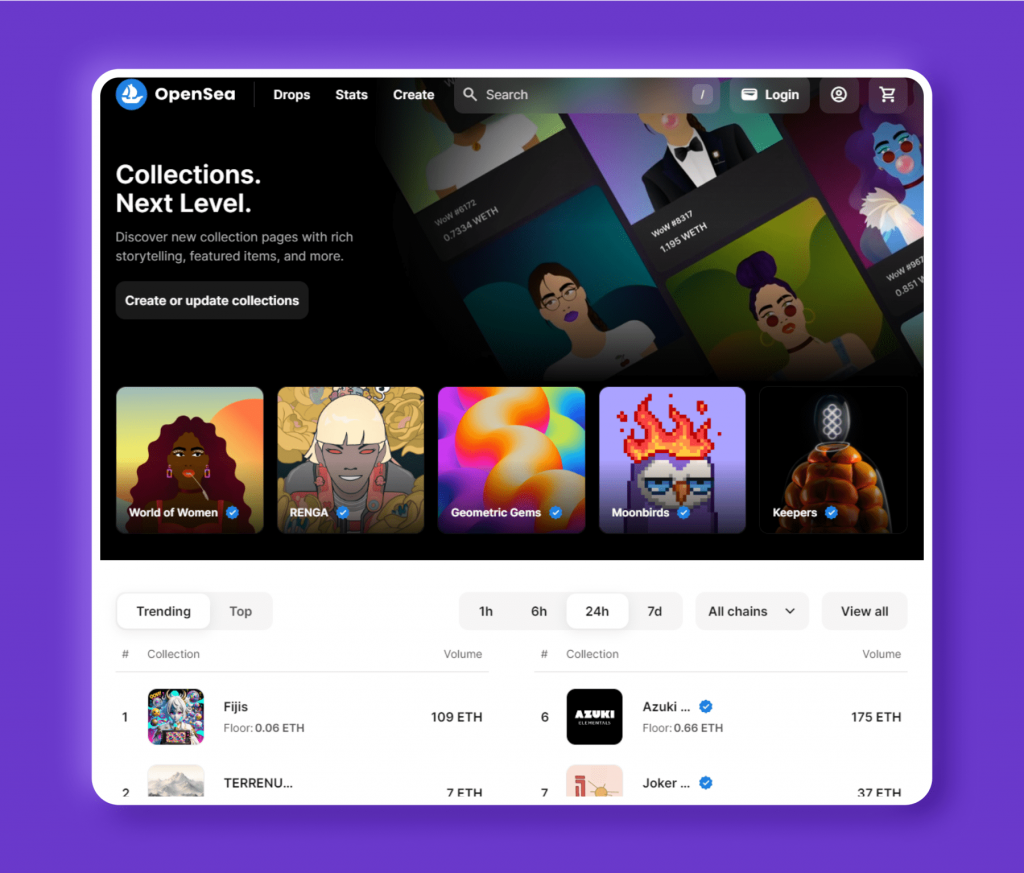
2. Rarible
Rarible is another well-known NFT marketplace that focuses on art, collectibles, and video game assets. It supports Ethereum, Polygon, Tezos, and Immutable X as payment options. Rarible stands out for its decentralized governance model, where holders of its native token, RARI, can participate in decision-making processes.
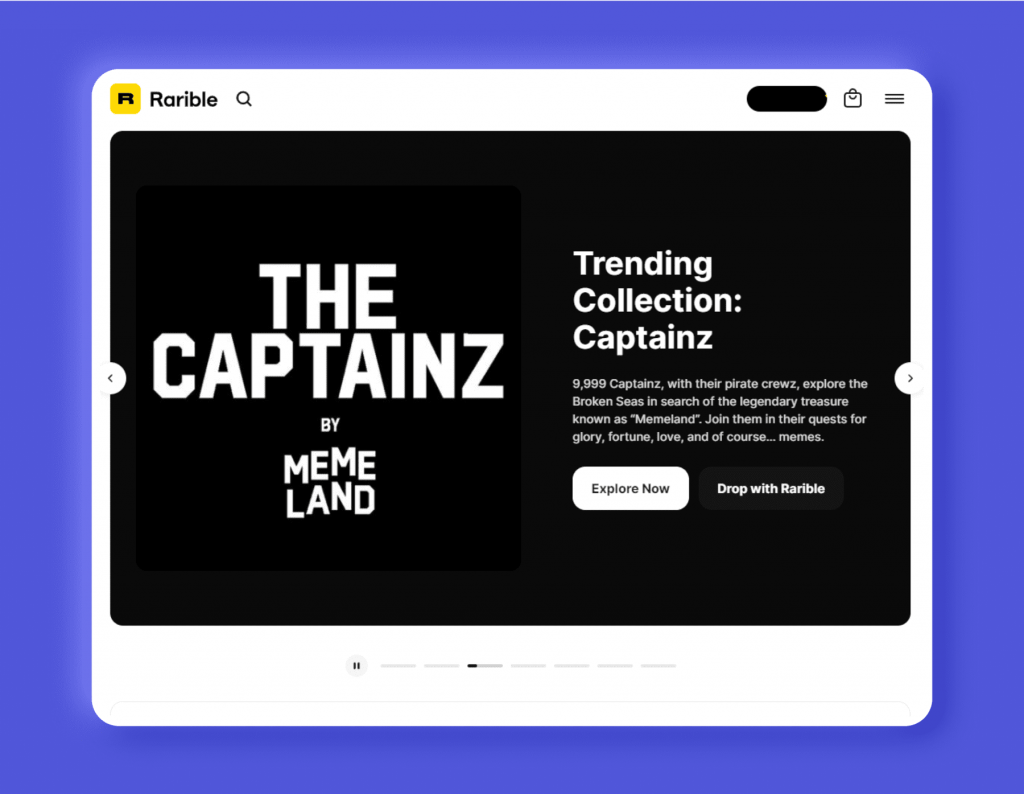
3. NBA Top Shot
NBA Top Shot is a unique NFT marketplace for basketball fans, offering NFT gaming trading cards featuring iconic moments in NBA and WNBA history. It is officially licensed by the NBA and provides a platform for fans to collect and trade their favorite basketball moments. NBA Top Shot accepts credit/debit cards and select cryptocurrencies as payment methods.

4. Binance NFT
Binance NFT is the NFT marketplace launched by Binance, one of the largest cryptocurrency exchanges. It offers a diverse range of digital assets, including artwork, gaming items, and collectibles. Binance NFT stands out for its low trading fees and user-friendly interface, making it accessible to both beginners and experienced collectors.
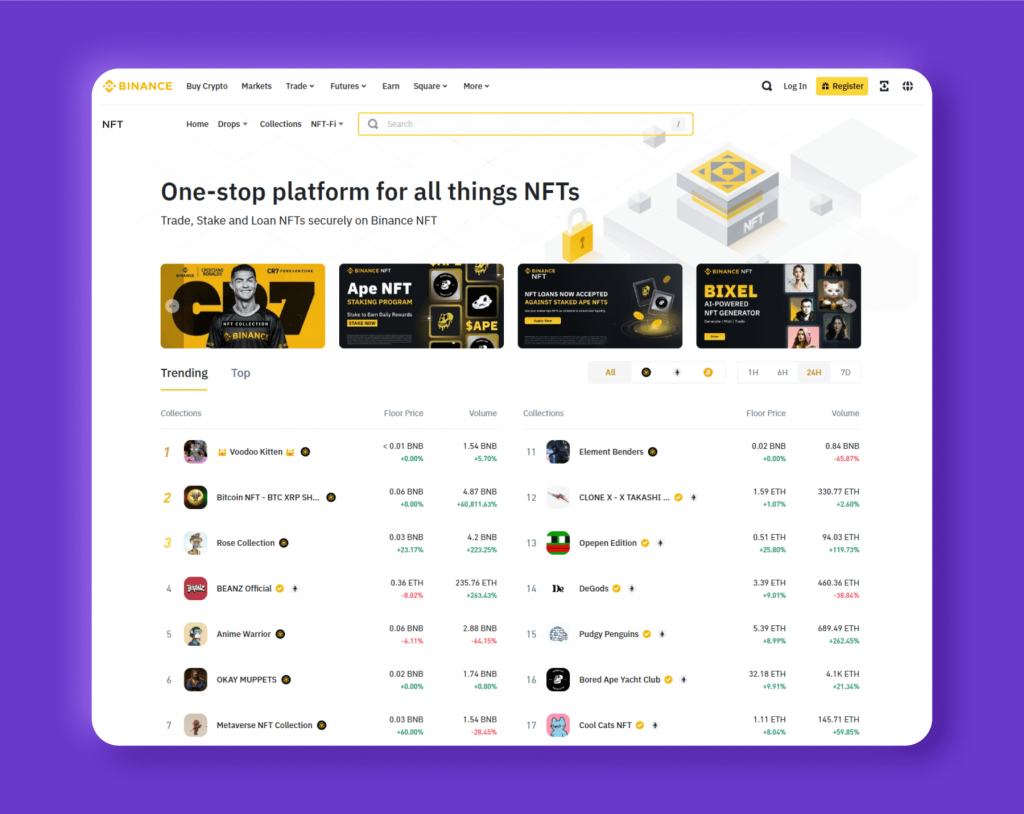
5. SuperRare
SuperRare is a high-end NFT art marketplace that focuses on curated and selective artwork. It positions itself as an art gallery within the NFT ecosystem, showcasing high-quality digital artworks. SuperRare charges a 15% fee on the first sale of an NFT and a 3% fee on subsequent transactions.
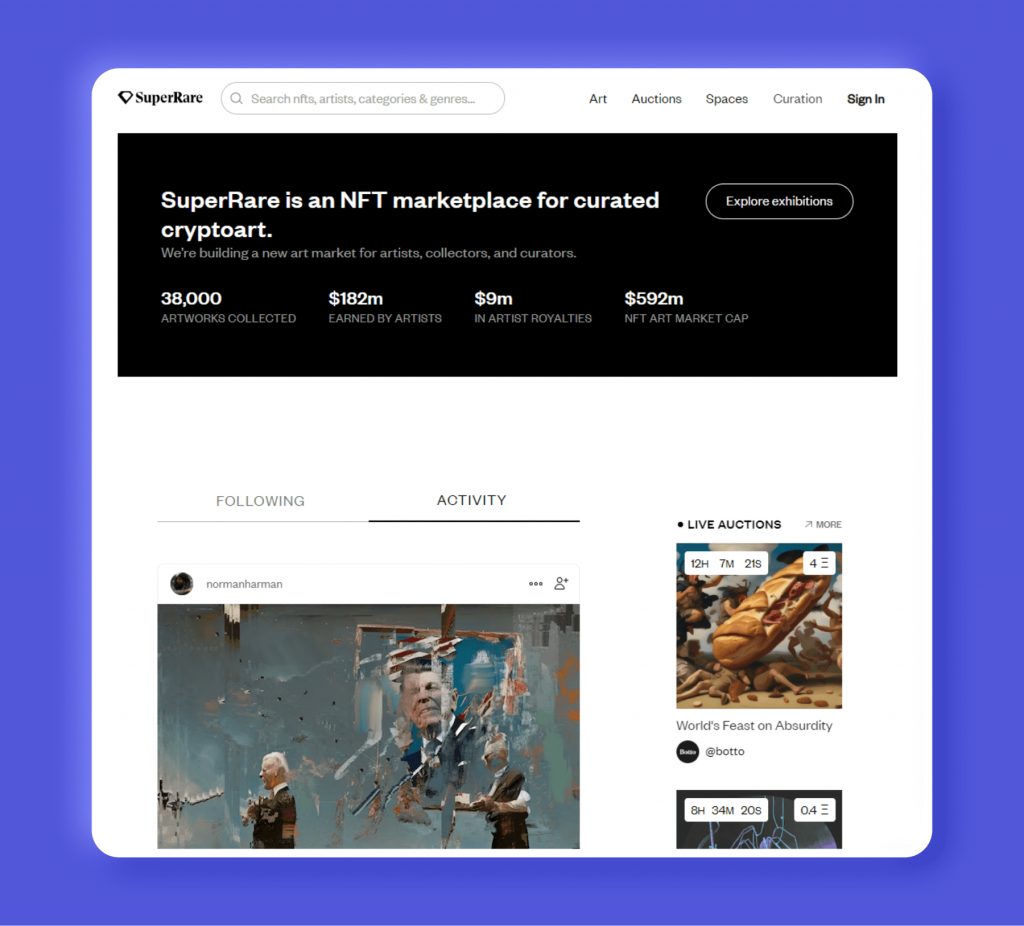
These are just a few of the many reliable NFT marketplaces available in 2023. Each marketplace has its own unique features, fee structures, and supported blockchains. If you’re a collector looking to buy NFT trading cards, research the different options and carefully consider your personal preferences and objectives.
Top 5 Most Valuable NFT Card Collections
Here are five of the most expensive NFT card collections on the market today:
Curio Cards
Curio Cards is one of the pioneering NFT art projects on the Ethereum blockchain. It features a set of 30 unique digital trading cards created by seven different artists. What sets Curio Cards apart is its rarity. The creators minted only 29,700 cards, with an estimated 4,000 cards lost or destroyed. This limited supply has made Curio Cards highly sought after, with individual cards fetching substantial prices in the secondary market.
On October 1st, 2021, a complete set of 30 rare cards, along with a rare misprint (17b), were sold at Christie’s auction house for $1.2M.

Rare Pepe
Rare Pepe is a collection of NFT trading cards inspired by the internet meme culture. Each card features a unique and rare Pepe character, known for its popularity in online communities. The Rare Pepe collection has gained a cult following, with collectors trading and showcasing their cards in various digital marketplaces. The scarcity and cultural significance of Rare Pepe cards contribute to their value and appeal among collectors.
In 2021, the first Rare Pepe trading card featuring a green depiction of Satoshi Nakamoto was sold for an astonishing amount of 147 ETH, equivalent to approximately $500,000.
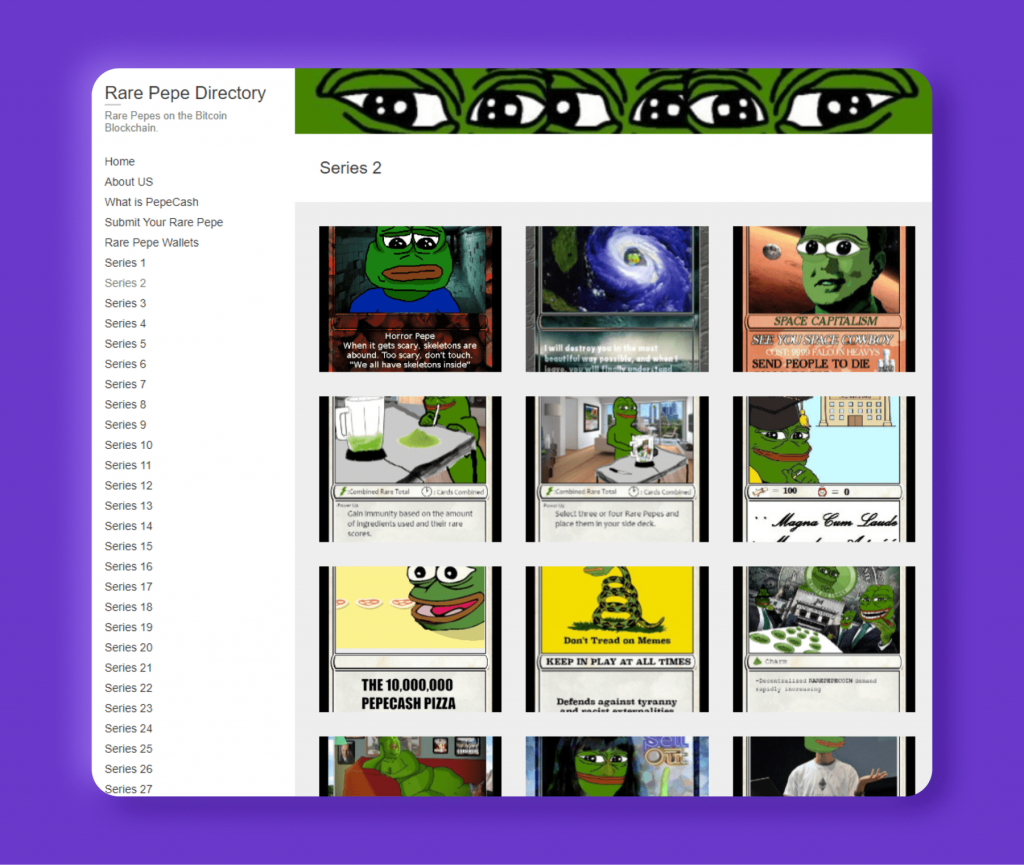
Wrapped Strikers
Wrapped Strikers, the pioneering NFT sport project built on ETH, brings together the worlds of soccer and NFT collectibles. This collection offers a total of 10,261 digital trading cards featuring 100 football players. The concept behind the Crypto Strikers collection was conceived in anticipation of the 2018 FIFA World Cup, making it a unique and timely addition to the NFT market.
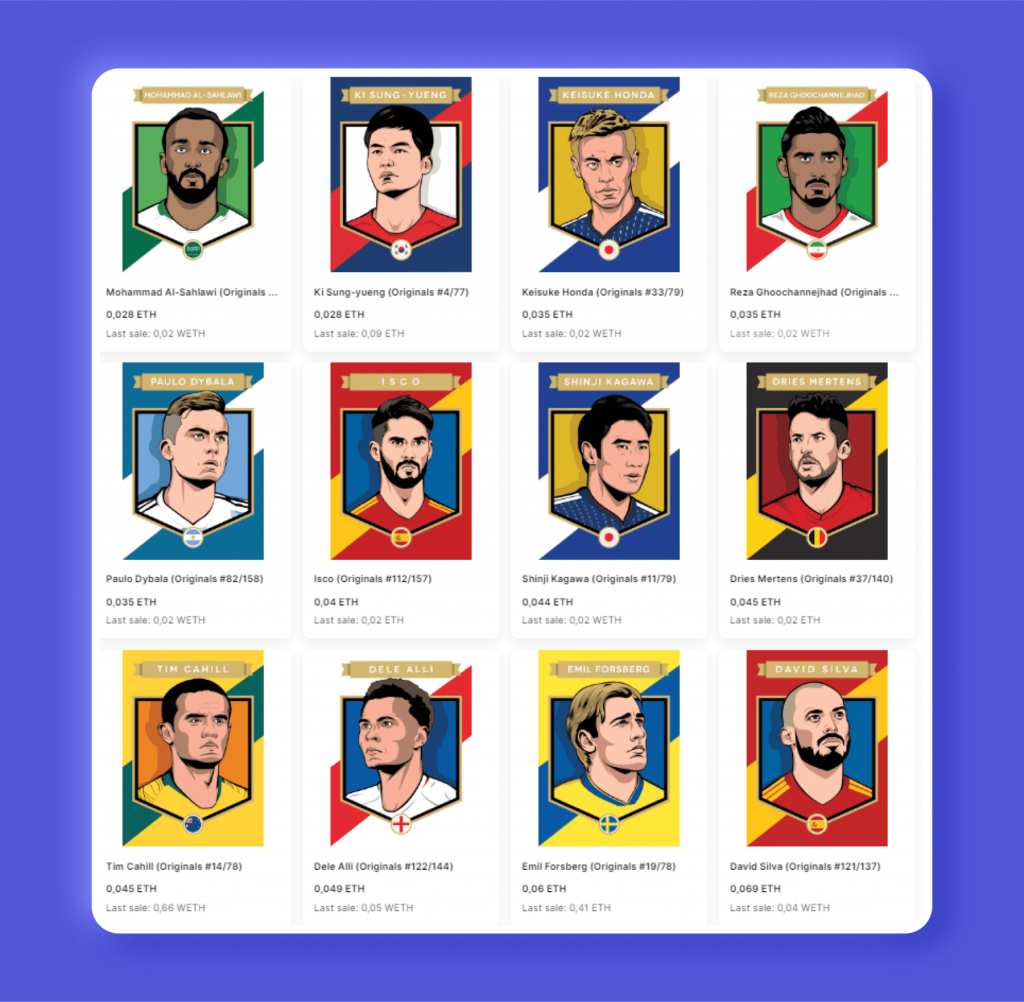
Candy Digital
Candy Digital is an NFT platform associated with Major League Baseball (MLB). It offers officially licensed MLB NFTs, including trading cards and digitized sports memorabilia. Candy Digital provides fans and collectors with a unique opportunity to own and trade digital assets associated with their favorite baseball teams and players. The platform’s connection to a major sports organization adds legitimacy and appeal to the NFT cards it offers.
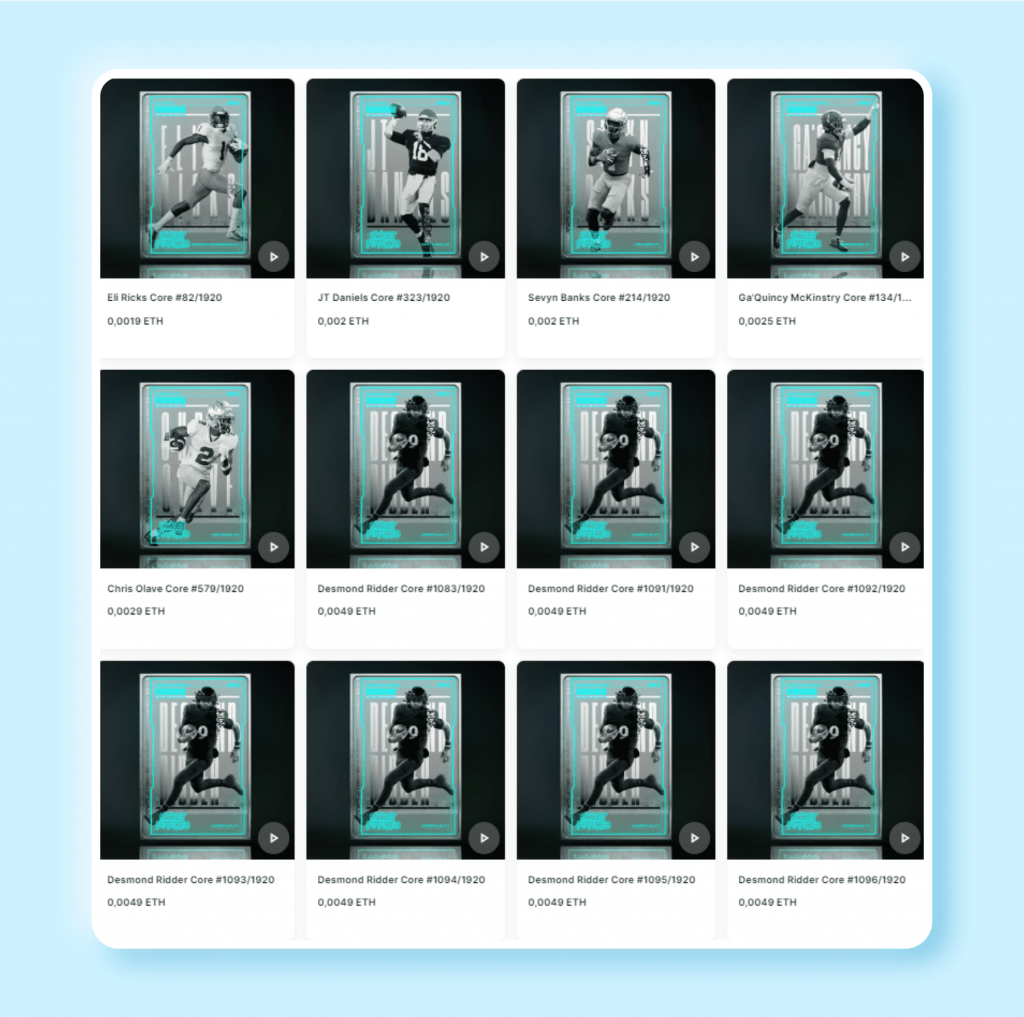
SoRare
SoRare is a digital soccer game that combines fantasy sports with NFT collectibles. Users can collect, trade, and manage virtual soccer teams using NFT player cards. SoRare has secured partnerships with several prominent soccer leagues, allowing gamers to build teams around real-world players. The game mechanics and the ability to use NFT cards in the gameplay make SoRare an engaging and interactive platform for soccer and NFT enthusiasts.

Conclusion
The world of collectible cards has undergone a significant transformation with the introduction of NFT trading cards. These digital assets offer collectors new opportunities to discover, trade, and showcase unique tokens while overcoming the limitations of physical cards.
FAQ
How can I create my own NFT trading card collection?
The first step in creating your own NFT collection is to determine the type of content you would like to tokenize. Once you have your content ready, you can choose a suitable NFT marketplace to mint and sell your digital assets.
There are several platforms available that allow creators to mint their NFTs, such as OpenSea, Rarible, and Mintable. Each platform has its own requirements and procedures for minting NFTs, so research and choose the one that best fits your needs. After selecting a platform, you will need to create a digital wallet to store your NFTs and handle transactions.
Additionally, marketing and promoting your NFT collection is crucial for gaining visibility and attracting potential buyers. Utilizing social media, collaborating with other artists, and participating in NFT communities can help in establishing your presence in the NFT space.
Also, you can hire crypto and NFT marketing agencies to take care of the marketing. You can learn more about them here.
Why do people use NFT?
NFTs have gained popularity due to their ability to verify ownership and scarcity of digital assets, which was previously difficult to achieve. They also enable creators to monetize their digital content in a unique way, as NFTs can be bought and sold on secondary markets. Additionally, collectors are drawn to the potential for high returns on investment from rare or sought-after NFTs.
What is the difference between NFT and crypto?
NFTs and crypto are both based on blockchain technology, but they serve different purposes. Cryptocurrencies like Bitcoin and Ethereum are digital currencies used for transactions, while NFTs are tokens that represent the ownership of a particular item or piece of media. Unlike crypto coins and tokens, which can be exchanged for equal value, each NFT is one-of-a-kind and holds its own intrinsic value.
